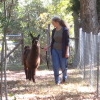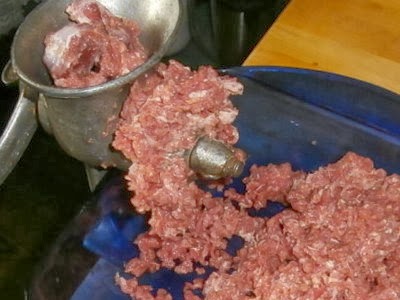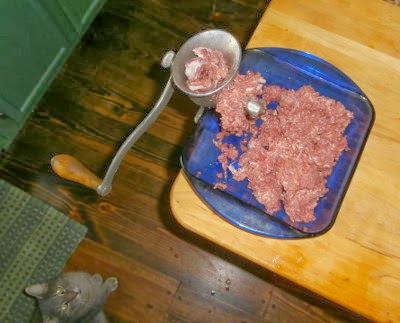| Online: | |
| Visits: | |
| Stories: |

| Story Views | |
| Now: | |
| Last Hour: | |
| Last 24 Hours: | |
| Total: | |
Home-Ground Chevon
 |
| This old hand grinder used to belong to my grandmother. |
We don't eat a lot of beef, but we do eat a lot of goat meat, also known as chevon (or cabrito, although chevon is the “legal” term.) Folks will sometimes ask what it tastes like; all we can say is it tastes like goat. It doesn't taste like beef anymore than mutton or venison tastes like beef. But it doesn't taste like mutton or venison either! Still, I've served chevon burgers to folks who didn't know it wasn't beef and weren't the wiser.
Like everything else we do, there have been things to learn. One helpful thing was aging the meat before butchering (technically, butchering is the cutting up of the carcass. The killing part is called killing).
Aging is the process of allowing the carcass to “rest” after it's been dressed. I'm sure we're all familiar with rigor mortis, the stiffening of a body shortly after death. This biochemical process is not permanent. Aging the carcass allows the muscles to relax and allows enzymes to further tenderize the meat. We didn't age the first chickens we prepared and the meat was tough! Aging makes a delicious difference. I'll list some links at the end of the post for those of you interested in more information.
I've also learned that it's a whole lot easier to grind the meat if it's partially frozen. At room temperature, even refrigerator temperature, it gums up the grinder and it's a real chore to get a good hamburger.
Someday I hope to invest in equipment that will let us process larger amounts, but for not, I'm thankful to have even a small hand grinder.
Parting “Where's Riley?” shot with the promised links below.
 |
| Of course I had snoopervision. And a taste tester as well. |
Links:
- Deer: Hang Time Field and Stream
- Aging Wild Game Chef Depot
- Aging Meat After Butchering Backyard Chickens
Source: http://www.5acresandadream.com/2014/02/home-ground-chevon.html



